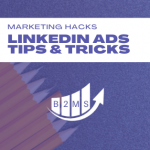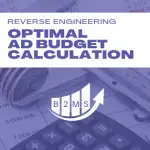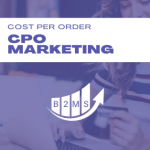Ad Visibility and Ad Viewability
What is the difference between ad visibility and ad viewability?
It’s not always easy to tell the difference between ad viewability and visibility. Many platforms even use the terms interchangeably. Officially, viewability means the possibility of an ad to be seen and visibility means the immediate visibility of an ad as soon as it is loaded.
I’m sure this still sounds similar to many people. So let’s look at the terms in a bit more detail:
What does viewability mean?
Viewability literally means “Ability of a view”. In plain English, it means that an ad has the possibility to be seen at a certain time. An ad may be loaded and an impression recorded, but the ad is out of sight/viewpoint (e.g. below the fold) or even at the very end of a page so that the view is not possible.
Viewability is therefore classically considered as yes/no. Is the ad theoretically visible? Yes or no! This then results in a percentage of the ad: Viewability Rate
Viewability Rate % = (Number of positive possibilities of a view / Number of total served impressions) * 100
Where the number of positive possibilities of a view equals Viewability = Yes.
The higher the viewability ad rate, the more ad units resulted in active views.

What is Ad Visibility?
Ad visibility is a key figure in online marketing for measuring advertisements. It expresses how often an ad was actually seen. Visibility is therefore a more accurate metric than viewability, as the latter only represents the possibility of a view.
The viewability display ad KPI is slowly being replaced by the visibility metric and more and more often they mean the same thing. Therefore, it is important to understand the exact definition of the metrics of the advertising platform used.
Why are viewability and visibility important in digital advertising?
To understand the importance of visibility metrics, we need to take a step back. Before viewability and visibility for display ads were measured, there was one key metric by which online publishers sold their ads – impressions. Impressions were sold at a CPM (Cost per Thousand/Mille). Each time an impression or ad loaded, it was recorded in the ad server and billed to the advertiser.
But if you look at a website, most banner ads don’t have the possibility to be seen (viewability = no).
So viewability and visibility are metrics that help advertisers only pay for display or video ads if they have actually been seen (viewable impressions).
There is also the above-the-fold metric, which represents when an ad placement is displayed in the field of view of the page. Traditionally, these ad slots were sold higher. However, above-the-fold is an outdated KPI as users are increasingly reading on smaller screens.
Moreover, even above-the-fold ads are sometimes not visible because, for example, they are displayed too far to the right, left, or too high (out of the field of view), displayed too short or too small.
The bottom line (pardon the pun) is that viewability and visibility are important to measure campaign effectiveness because only ads that are actually seen (or at least have the opportunity to be seen) are taken into account. Publishers and ad networks can also be compared on the basis of visibility rates. Both rates are industry-standard metrics.
Video viewability metrics
Viewability metrics are not just used for display online advertising but also for other formats. Video viewability metrics are measurements used to determine how often a video ad is actually seen by viewers. It helps advertisers understand the effectiveness of their campaigns and optimize accordingly. These metrics assess factors like the percentage of the video in view and the duration of time it is visible on the screen, providing valuable insights for ad performance analysis.
Ad Viewability Benchmarks
Meetrics collects quarterly viewability benchmark reports. They found that in Q2 2021, the International Display Viewability Benchmark was 57%. This means that only 57% of all display ads could actually be seen.
Video viewability ran significantly higher at 79%. This is because most video ads are in-stream.
Looking at the stats for mobile and desktop, we see that the display viewability benchmark for mobile was 51% and for desktop 65%. In Q4 2020, these figures were still 53% for mobile and 69% for desktop.
In Germany, the viewbility benchmarks look similar: 55% viewability for display units (69% desktop & 46% mobile) and 84% video. (In Q4 2020 comparison: display 59%, video 90%).
Within Europe, the benchmarks vary widely. For example, the benchmark for display viewability in France is only 49%, while in Poland the video viewability benchmark is 78%. Overall, Germany performs very well in a European comparison.
Ad viewability and visibility FAQs
Why is viewability important?
Ad viewability refers to the measurement of how likely an ad is to be seen by users. Therefore, if an ad is not viewable, it cannot effectively reach its intended audience and deliver the desired message. Viewability is crucial for ensuring that the marketing efforts are not wasted, but rather optimized to maximize the impact of the advertisements.
How to calculate viewability
To calculate viewability, you can use the formula:
(Visible Impressions / Total Impressions) x 100.
This equation provides the percentage of visible ads out of the total impressions served. By knowing the number of visible impressions and total impressions, advertisers can determine their campaign’s viewability rate.
What’s the average viewability rate?
The average display ad viewability rate in 2022 was 57%. That means, that almost half of your banner ads were not seen by users.
Other important advertising metrics
Ad visibility and ad viewability are important metrics for display and video advertising in online marketing. Different types of digital ads have different KPIs. For example, for search campaigns, clicks are the decisive factor. Therefore, only costs per click are incurred there (pay-per-click PPC advertising).
Audio advertising for radios or podcast marketing is usually measured by the number of downloads or reach. Therefore, it is important to understand what the ad campaign goal and medium are and to measure and optimize the right KPIs.
Anyways, marketers can calculate the cost per lead or CPAs for all campaigns and even forecast the required budget to achieve their goals.

Sascha is a Lifecycle Marketing Consultant with over 8 years of digital marketing experiences in Silicon Valley, the UK, and Germany.
After leading the demand generation for a 100+ million company, he decided to venture out on himself. He’s now helping clients to attract and convert more leads and customers.
His main focus are SEO, paid media & marketing automation – all with the focus to tie marketing campaigns to revenue.
Sascha has been featured in industry publications.



